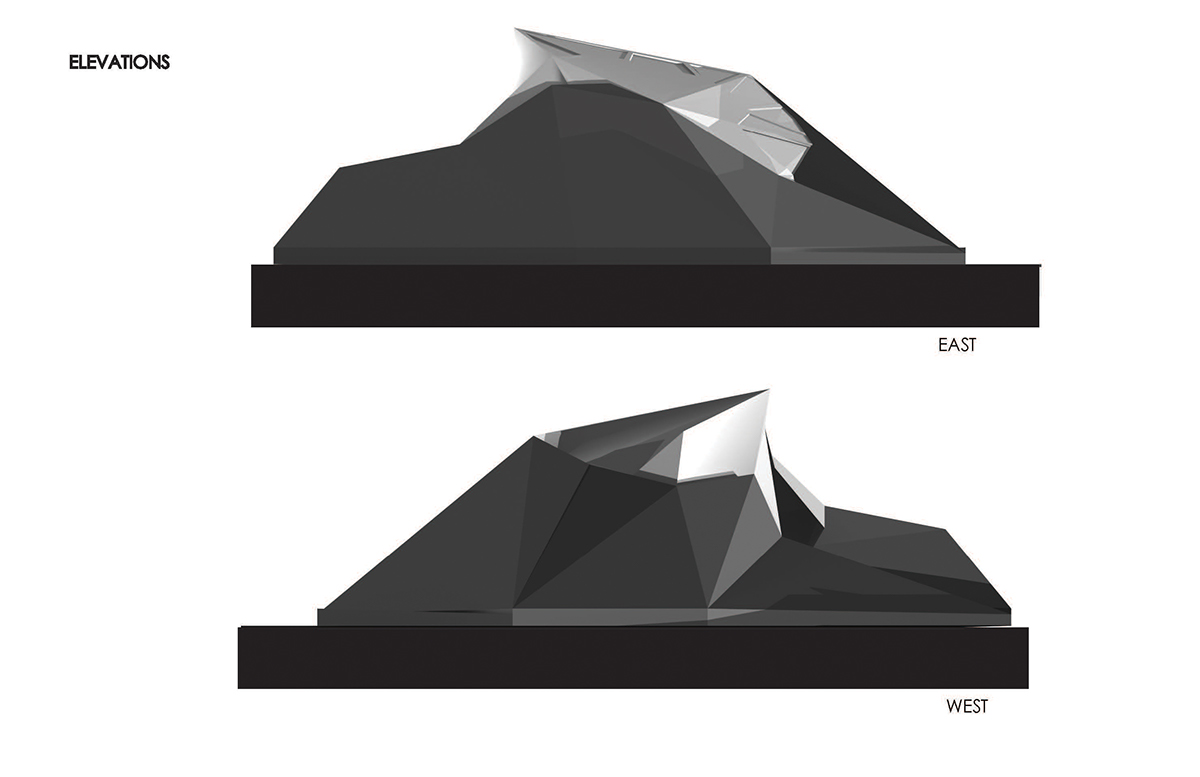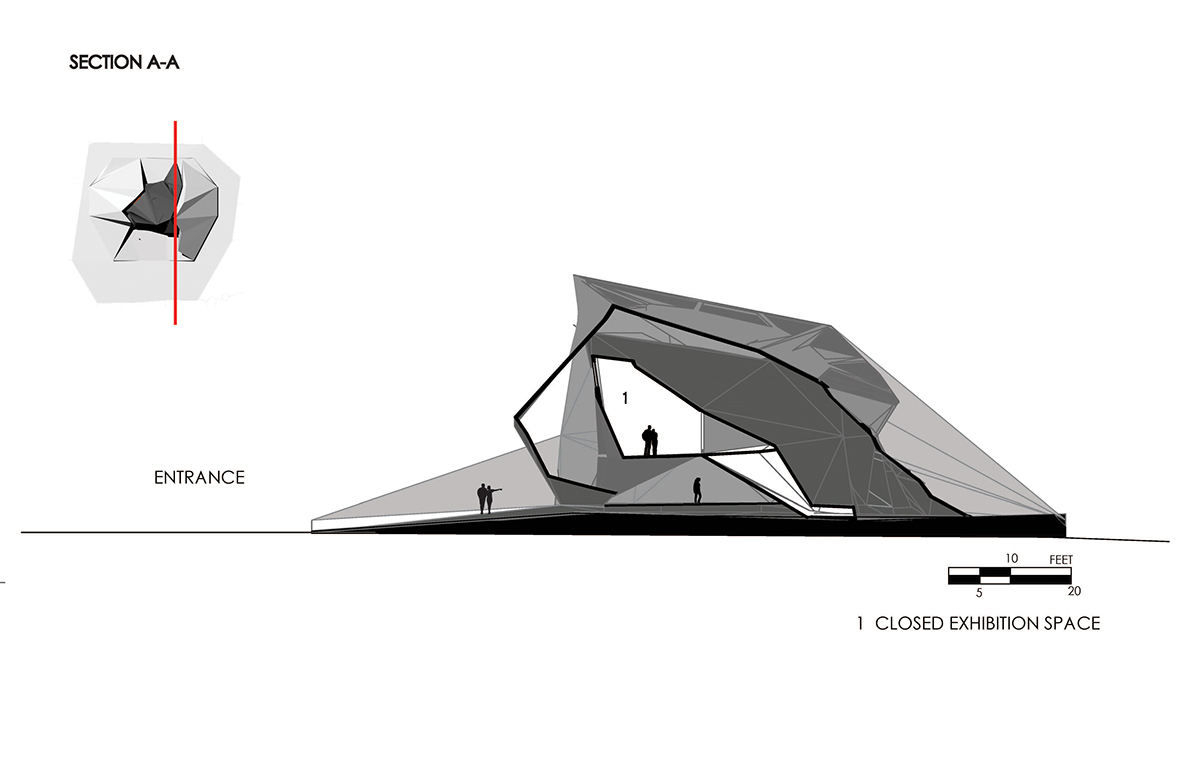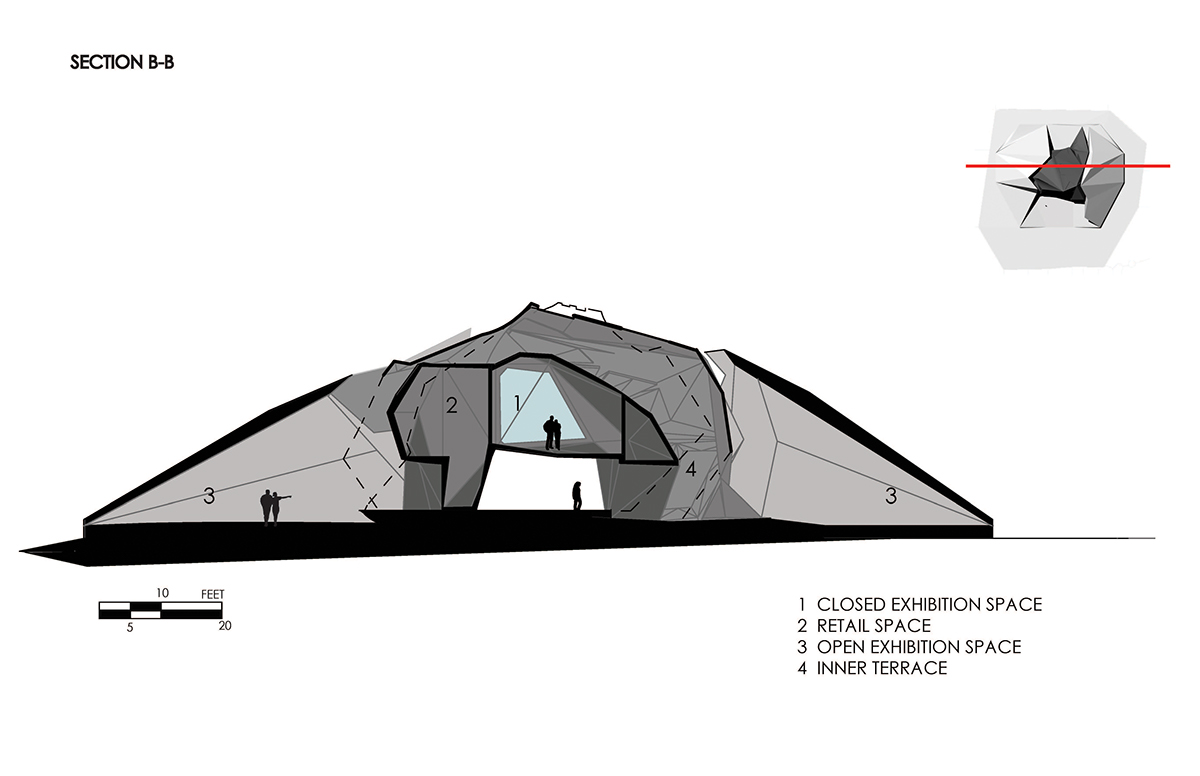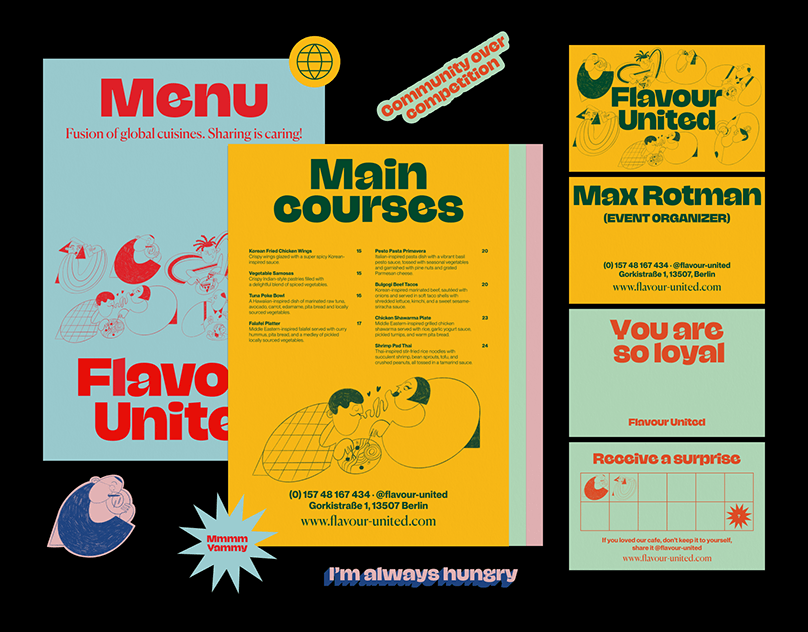
The main idea is an object misfit within an object that is expanding vertically but is compressed by the ground.
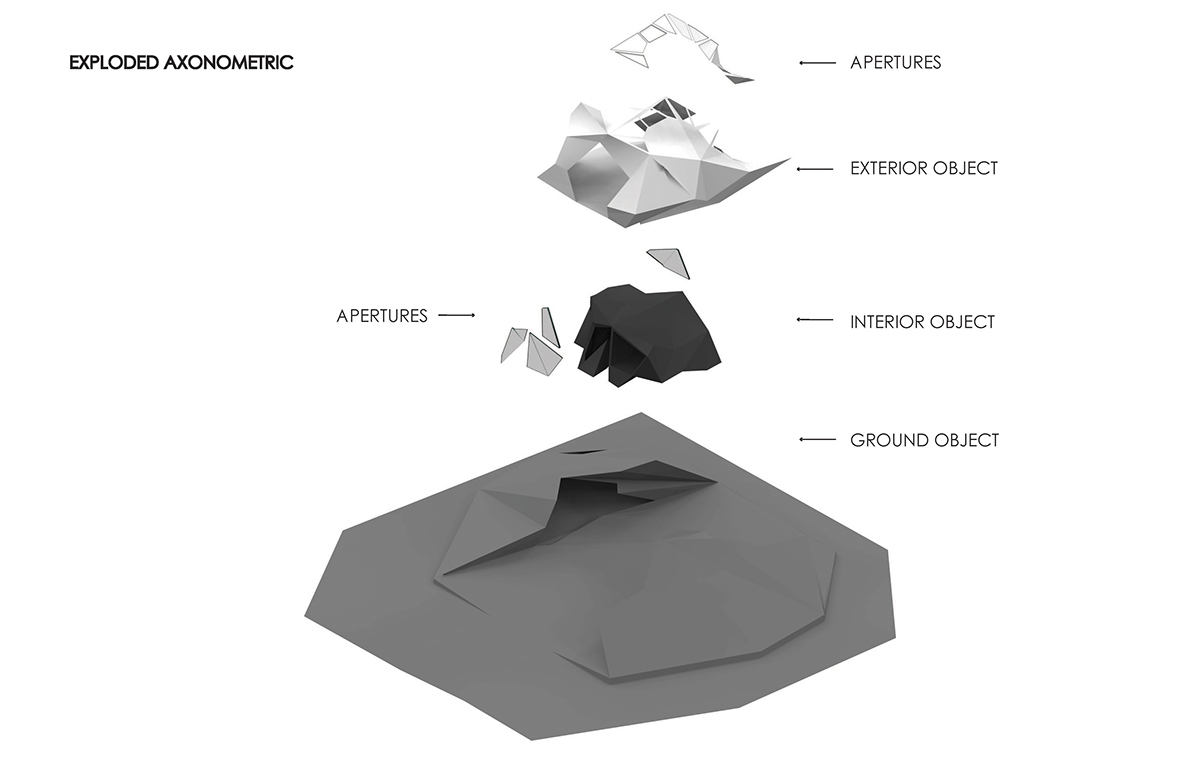
This interaction within forms is meant to question whether architecture is part of the ground or a distinct object in itself.


The morphological evolution begins with a square figure that starts expanding laterally. A series of bends and cuts start editing the shape creating a lower and higher plane and defining more clear the positive and negative spaces. After this space has been clearly defined, another form starts enveloping the shape and reacting to the existing geometry. It starts bending inwards, adapting itself to the now inner form. As it contracts, it protracts: expanding just enough to create spaces in between the two structures that create an inner terrace. (Also visible in the Physical Model Development). The misfited forms rest on a flat plane. This ground plane creates a step as soon as it touches the edges and keeps expanding to the sides. This slight addition to the flat surface starts spatially separating the middle area where the forms stand from the lateral wide open space. As the form keeps expanding it decides to fold inwards and compresses the inner forms. There is a misfit yet the enveloping form reacts to the existing shapes. A transitory space is created as these three forms interact.
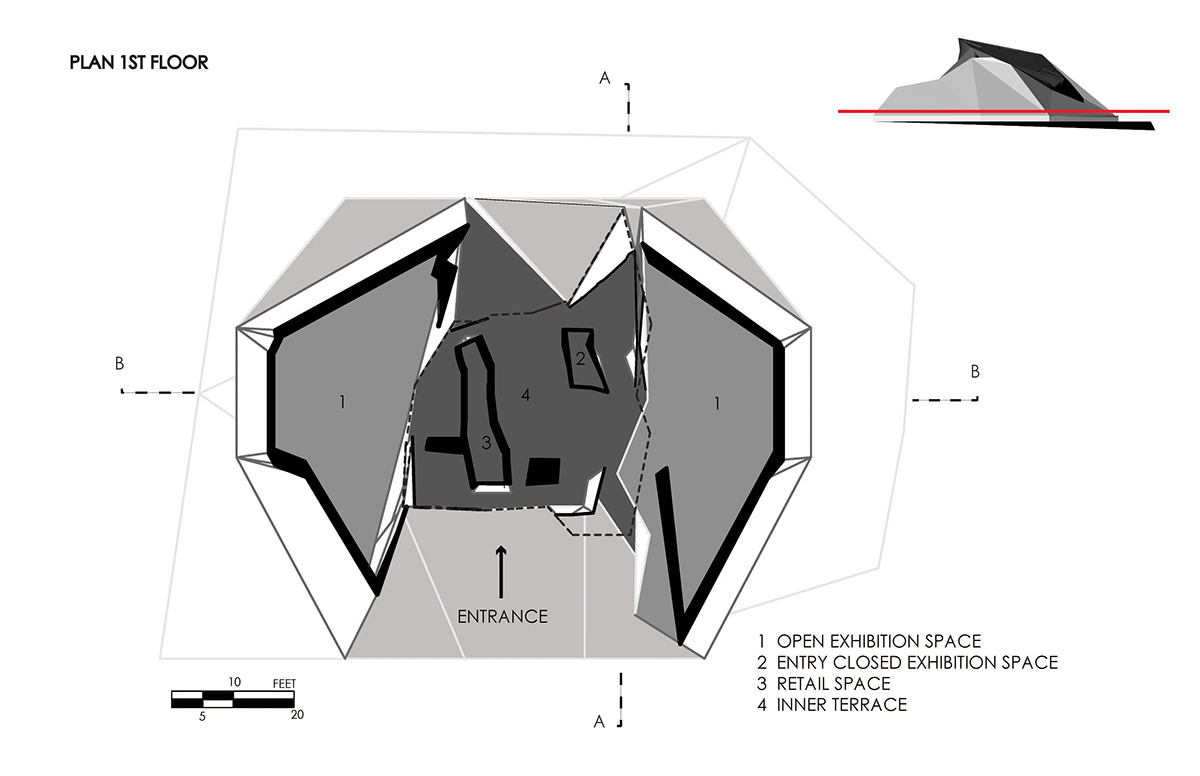






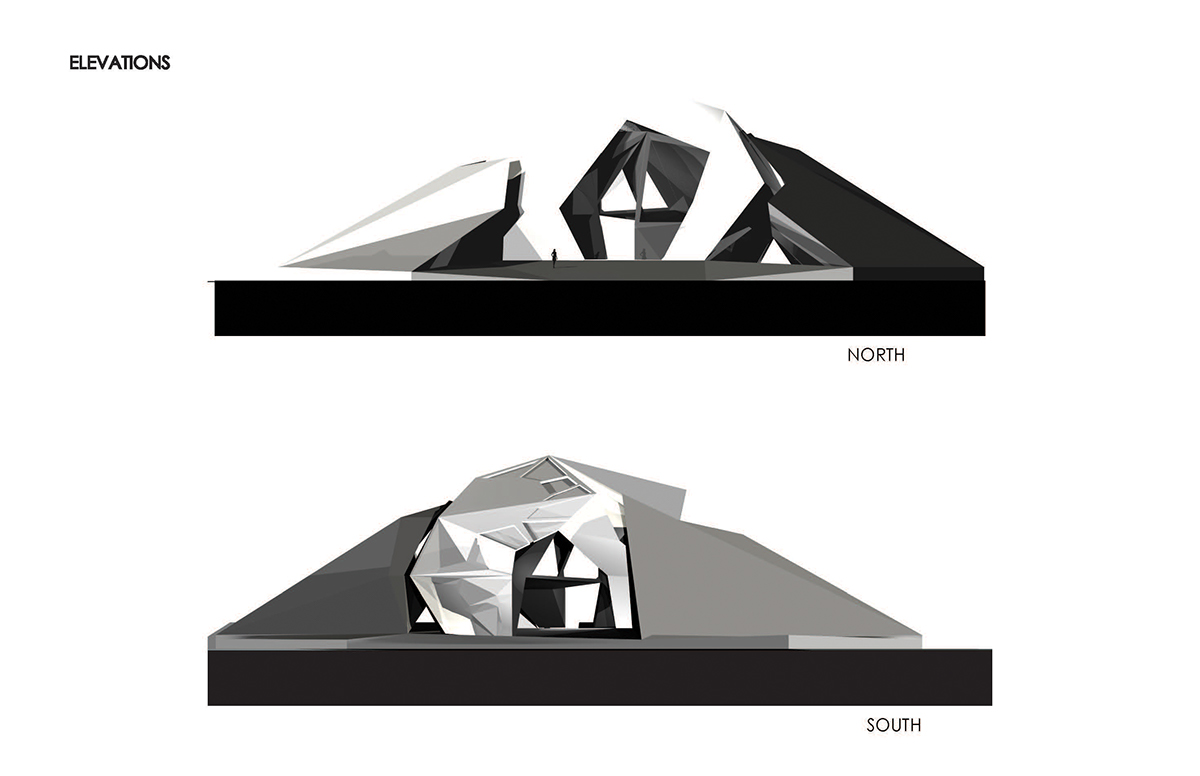
Just like the base starts big and gets thinner towards the top, the circulation plays with the senses by creating a wide open space that leads to a small space that serves as transition for another wide open space. There is a dialogue between the idea of expansion and compression and the actual morphology of the project. The duality of both the shape and human experience works harmoniously and becomes the communicating force between the morphology, circulation and space, in other words, form, space and order.
